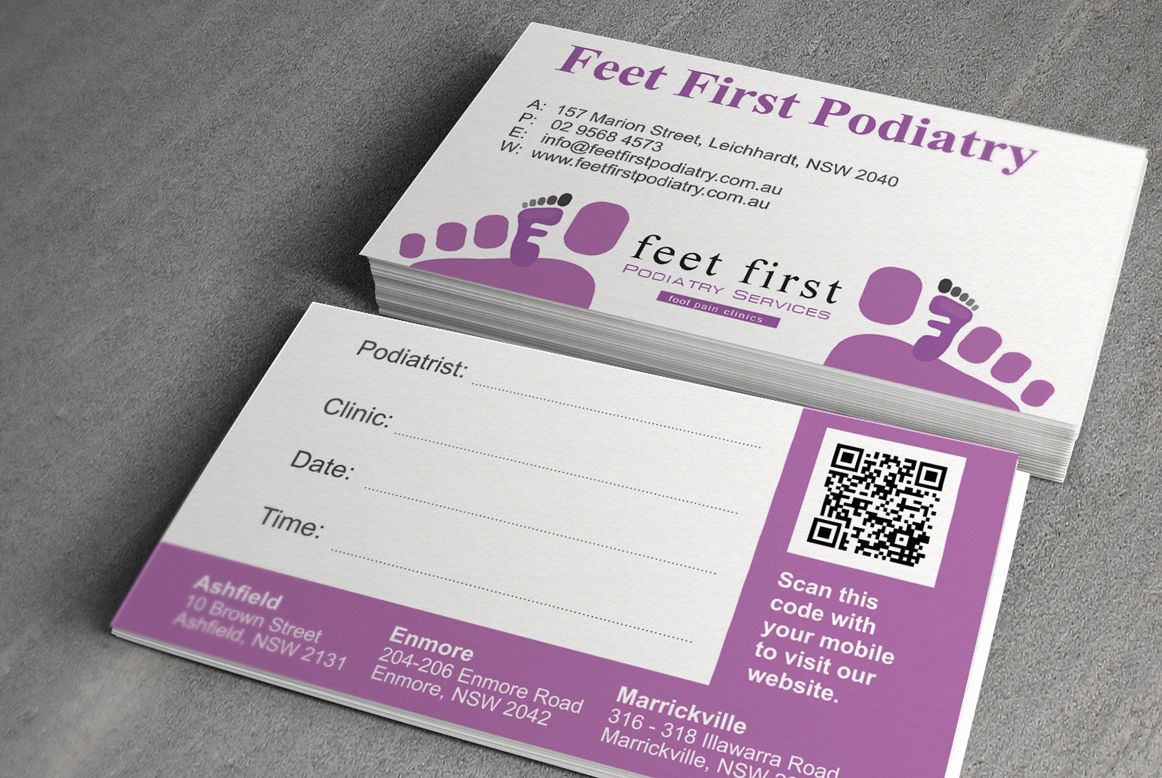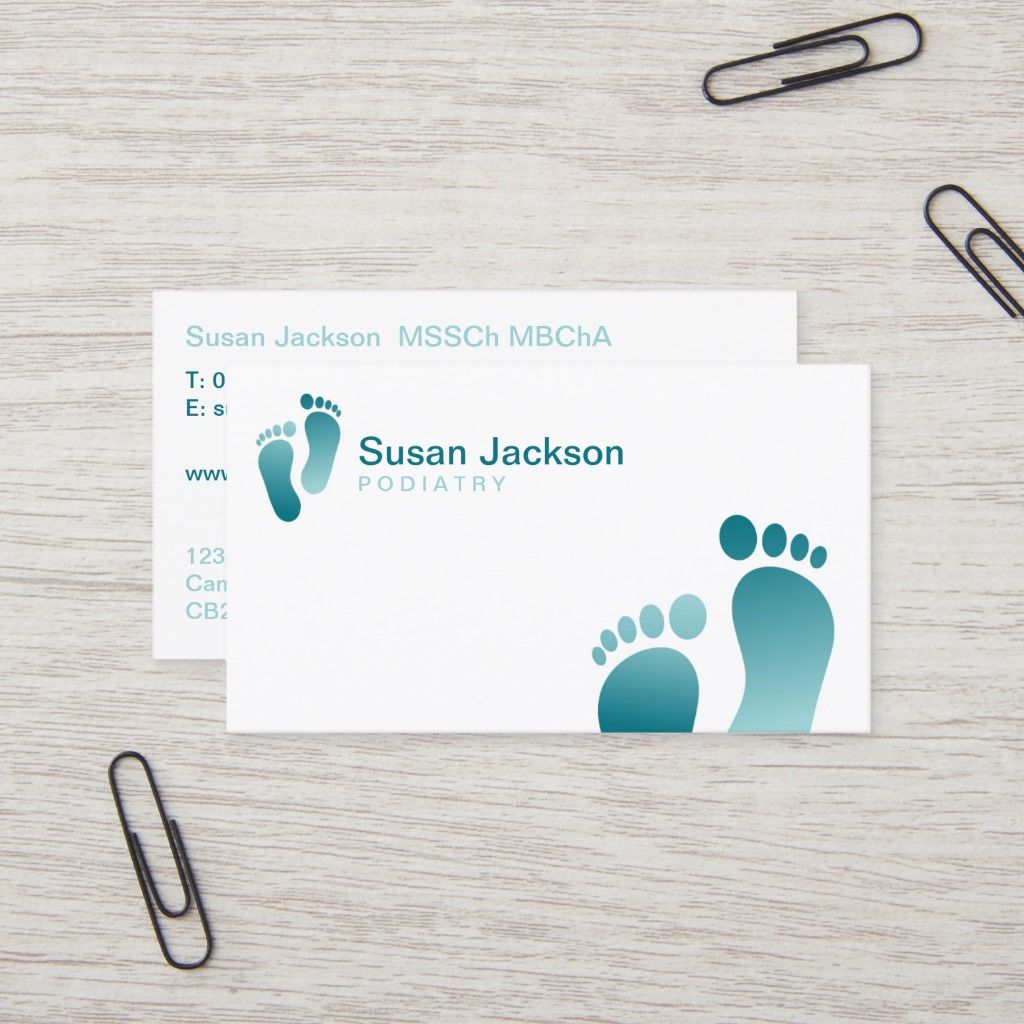
Are you a podiatrist looking to enhance your professional image and promote your services? One powerful tool you should consider is a well-designed and strategically crafted business card. In today’s digital age, where virtual connections often dominate, business cards can still create a lasting impression and help you stand out in the highly competitive healthcare industry. In this article, we will explore the importance of podiatry business cards and provide useful tips on how to create effective marketing tools that reflect your expertise and professionalism.
The Significance of Podiatry Business Cards

Podiatry business cards serve as mini advertisements that not only provide potential patients with contact information but also offer a glimpse into your practice and establish your brand. These small but mighty cards can convey professionalism and credibility, making a positive first impression on potential patients, colleagues, and other professionals within the medical community. Handing out personalized business cards at networking events, conferences, or even during casual encounters can be a powerful way to create connections and generate awareness about your podiatry services.
Establishing Credibility and Professionalism
When designing your podiatry business cards, it is essential to prioritize professionalism. Choosing the right color scheme, font style, and overall layout can significantly impact how others perceive your practice. Opt for a design that aligns with your specialty and presents you as an authority in the field. Avoid using overly decorative or informal designs that may undermine your credibility. Simple, clean, and professional designs are typically the most effective in conveying trust and expertise.
Building Brand Awareness
Your business card is an opportunity to display your branding elements, such as your logo, tagline, or mission statement. Consistency with your overall branding strategy helps to reinforce your practice’s identity and create a sense of familiarity among potential patients. Carry your brand elements across your business cards, website, social media profiles, and any other marketing materials you use. This cohesive approach helps establish a strong brand presence that is easily recognizable and memorable.
Enhancing Recall and Referrals
A well-crafted podiatry business card serves as a visual aid to help potential patients remember you and your services. Including your name, contact information, and a brief description of your specialty on the card can remind individuals of the conversation they had with you and increase the likelihood of follow-up and appointments. Additionally, an eye-catching design or unique feature, such as a QR code linking to your website or an offer for a free consultation, can encourage referrals by prompting others to share your card with their network.
Key Elements of an Effective Podiatry Business Card

Now that you understand the importance of podiatry business cards, it’s time to delve into the elements that make them effective marketing tools. By considering the following key elements, you can create business cards that not only catch people’s attention but also convey your professionalism and expertise.
1. Contact Information
The most crucial element of any business card is your contact information. Include your name, title (e.g., podiatrist, foot specialist), phone number, email address, and physical address. Additionally, you may include your website URL and social media handles, especially if they are well-maintained and showcase your expertise. Make sure your contact details are clear, legible, and up-to-date. Using a font size that is appropriate for easy reading is essential, especially for individuals who may have visual impairments.
2. Logo and Branding
Incorporate your practice’s logo and branding elements to create a visually cohesive card. Your logo should be prominently displayed and representative of your podiatry services. The color scheme and overall design should align with your branding strategy, creating a consistent and professional look across all marketing materials. Avoid overcrowding your business card with too many elements, as simplicity often makes a stronger impact.
3. Specialty and Expertise
Highlighting your podiatry specialty and expertise on your business card helps potential patients understand your unique value proposition. Use concise and impactful language to describe your specialization, such as “Expert in Sports Podiatry,” “Foot and Ankle Surgeon,” or “Diabetic Foot Care Specialist.” By emphasizing your specific skills and experience, you can attract the right patients who are seeking your particular services.
4. Unique Selling Proposition
Differentiating yourself from other podiatrists in the market is crucial for attracting and retaining patients. Consider including a unique selling proposition (USP) on your business card. A USP is a concise statement that communicates the benefits or advantages of choosing your services over others. For example, “Pain-Free Foot Care Solutions” or “Custom Orthotics for Optimal Comfort and Support.” Your USP should resonate with your target audience and highlight the unique aspects of your practice.
5. Design Considerations
The overall design of your podiatry business card should reflect the professionalism of your practice while still capturing attention. Opt for a layout that is simple, uncluttered, and easy to read. Use fonts that are legible, and ensure the font size is appropriate for all readers. Consider using a high-quality, thick cardstock to elevate the perceived value of your business card. Additionally, incorporating relevant imagery, such as a graphic representation of a foot or a silhouette of a podiatrist, can help reinforce your professional identity.
6. Call-to-Action
Including a call-to-action on your podiatry business card can prompt recipients to take action and engage with your services. For example, you may invite potential patients to schedule a consultation, visit your website for more information, or mention a special offer or discount code. By providing clear instructions on what steps to take next, you can encourage potential patients to move forward in their healthcare journey with you.
Conclusion
In the digital age, where virtual connections dominate, podiatry business cards continue to be valuable marketing tools for podiatrists. By prioritizing professionalism, establishing branding consistency, and strategically incorporating key elements, you can create highly effective business cards that leave a lasting impression on potential patients and other professionals in the medical community. Remember, your podiatry business cards are a reflection of your expertise and professionalism, so invest the time and effort to design and distribute them wisely. Start creating your impactful business cards today and see how they can boost your practice’s visibility and attract more patients to your podiatry services!
Olivia Reynolds, a marketing maven, is passionate about the impact of graphic design on brand success. Her love for outdoor adventures and travel fuels her fresh perspective on the importance of visual aesthetics in business cards and branding.